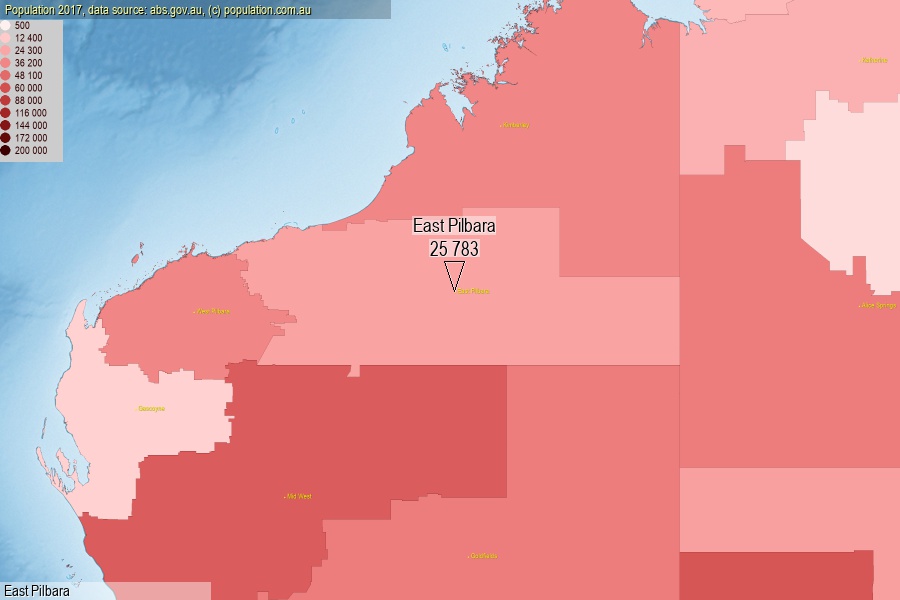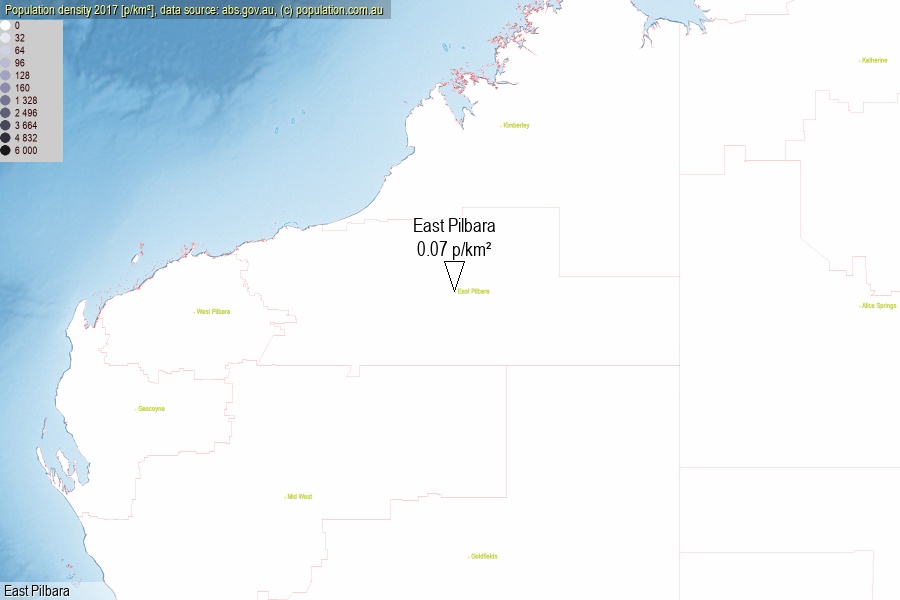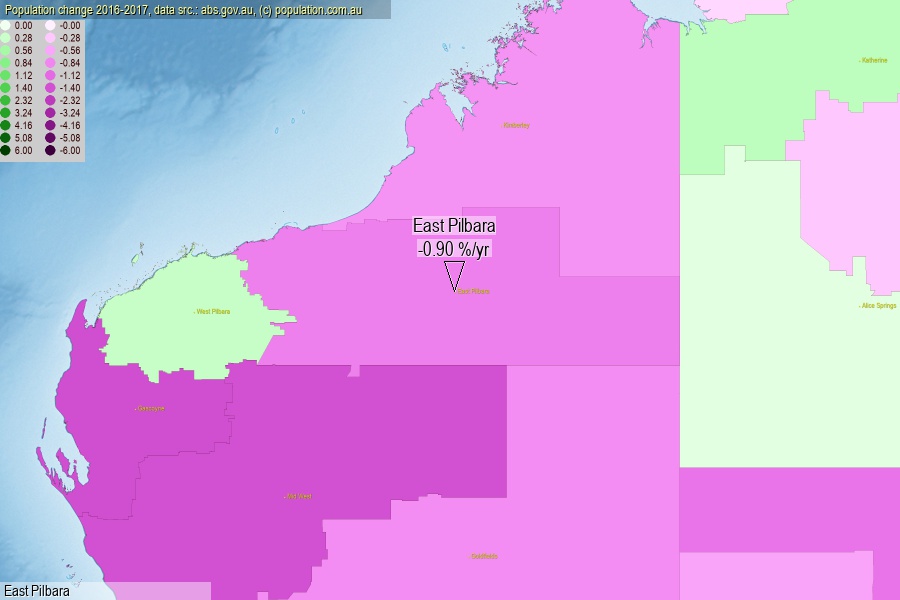 population.com.au
population.com.auLast official estimated population of East Pilbara (as Statistical Area Level 3) was 25 783 people (on 2017-06-30)[2]. This was 0.10% of total Australian population and 0.995% of WA population. Area of East Pilbara is 390 723.00 km², in this year population density was 0.07 p/km² . If population growth rate would be same as in period 2016-2017 (-0.9%/yr), East Pilbara population in 2025 would be 23 985. [0]



Click to enlarge. East Pilbara is located in the center of the images.
Population [people], population density [p./km²] and population change [%/year] [2]
View borders » (new window) [4]
[2001-2002] +3.12 %/Y
[2002-2003] +3.22 %/Y
[2003-2004] +2.68 %/Y
[2004-2005] +3.08 %/Y
[2005-2006] +4.18 %/Y
[2006-2007] +4.08 %/Y
[2007-2008] +5.84 %/Y
[2008-2009] +6.75 %/Y
[2009-2010] +4.68 %/Y
[2010-2011] +4.27 %/Y
[2011-2012] +1.63 %/Y
[2012-2013] +0.53 %/Y
[2013-2014] -2.54 %/Y
[2014-2015] -3.17 %/Y
[2015-2016] -3.34 %/Y
[2016-2017] -0.90 %/Y
[0] Calculated with linear interpolation from officially estimated population
[1] Read more about SA3 and Australian Statistical Geography Standard (ASGS) on abs.gov.au
[2] Population data from Australian Bureau of Statistics (Population and density: 2017; change: 2016-2017)
[3] Digital Boundaries: Australian Statistical Geography Standard (ASGS) 2016.
[4] Border coordinates are simplifyed using Ramer-Douglas-Peucker algorithm.